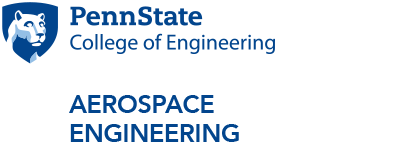VLRCOE Rotorcraft Simulator Research Projects
| Project | Dates | Funding Source |
|---|---|---|
| Experimental and Computational Instrumentation for Research on Safety, Survivability, and Enhanced Performance of Naval Rotorcraft | Aug 2007–May 2008 | ONR DURIP–funded initial build of simulator |
| Flight Control Design for Rotorcraft with Variable Rotor Speed | May 2006–May 2011 | Army (VLRCOE) |
| Adaptive Flight Control for Alleviating Pilot Workload During Shipboard Operations (Phases I and II) | May 2007–Aug 2010 | Navy (SBIR with Barron Assoc.) |
| Simulation Model Validation and Handling Qualities Analysis of the X-49A Compound Helicopter | Aug 2008–Dec 2011 | Piasecki Aircraft |
| Advanced Modeling and Flight Control Design for Gust Alleviation on Ship-Based Helicopters | Dec 2008–Aug 2010 | Sikorsky, Army (CRI) |
| Control Design Methodologies for Improving Rotorcraft Gust Rejection with On-Blade Control | Jan 2009–May 2011 | Army/NASA |
| Handling Qualities and Gust Alleviation Characteristics of Helicopters Using Active Rotors | Jan 2009–May 2011 | Army (CRI) |
| Aided/Automated Flare and Landing during Autorotation (AutoFLARE) | Jan 2010–Aug 2013 | Army (VLC) |
| Optimal Autorotative Profiles Using Active Inceptor Cueing | Jan 2010–May 2010 | Navy (SBIR with CDI) |
| Handling Qualities Requirements and Flight Control Concepts for Future Vertical Lift | Jun 2011–Aug 2013 | Army (VLC) |
| Advanced Response Types and Cueing Systems for Naval Operations | Sep 2011–Sep 2016 | Army (VLRCOE) |
| Control Redundancy to Enhance Rotorcraft Performance, Handling Qualities, and Survivability | Sep 2011–Sep 2016 | Army (VLRCOE) |
| Autonomous Multi-Lift System | Sep 2011–Sep 2016 | Army (VLRCOE) |
| Innovative Method for Real-Time Damage Alleviation (Phases I and II) | Feb 2012–Dec 2014 | Navy (SBIR with TDA) |
| Alternative Control Law Architecture for Fly-By-Wire Helicopters | Jan 2012–Dec 2013 | Bell Helicopter Textron Inc. |
| Pilot-in-the-Loop CFD Method Development | Apr 2014–Mar 2017 | ONR |
| Autonomous Control Modes and Optimized Path Guidance for Shipboard Landing in High Sea States | Jun 2014–May 2017 | ONR |
| Handling Qualities Requirements for Future Rotorcraft Configurations and Missions | Jan 2016–Dec 2017 | Army (VLC) |
| High Speed Carriage of External Loads | Aug 2016–Aug 2020 | Army (VLRCOE) |
| Load Alleviation Control Design Using High Order Dynamic Models | Aug 2016–Aug 2020 | Army (VLRCOE) |
| Fidelity Requirements for Ship Airwake Modeling in Dynamic Interface Simulations | Aug 2016–Aug 2020 | Army (VLRCOE) |
Return to the Rotorcraft Flight Simulator Facilities page.



